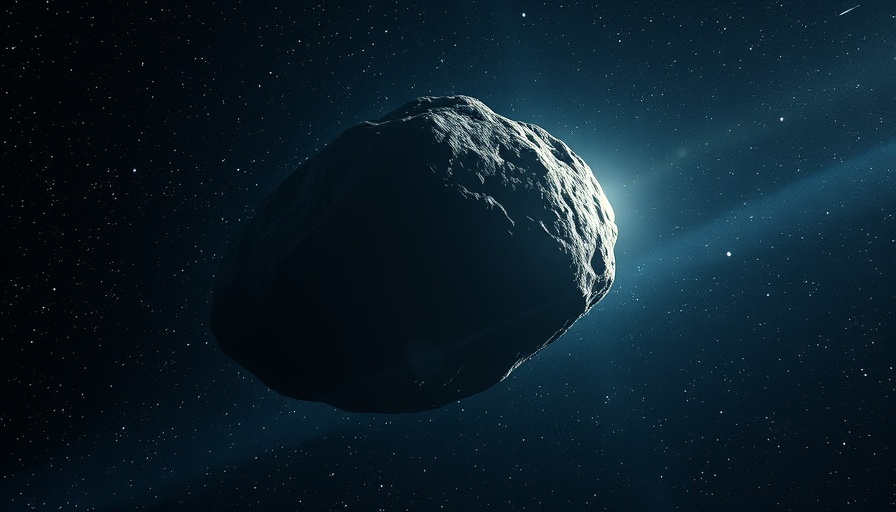
NASA's Ambitious Quest to Unravel Asteroid Mysteries
NASA’s Lucy mission represents a groundbreaking venture into the depths of our solar system, with its sights firmly set on the asteroid Donaldjohanson. Scheduled to make its closest approach on April 20, 2025, this expedition could offer unparalleled insights into the formation and evolution of asteroids. Named after Donald Johanson, the anthropologist who discovered the famous fossil Lucy, this asteroid aims to provide a dynamic connection between humanity’s origins and the origins of our planetary neighbors.
When and How Did Donaldjohanson Form?
Recent modeling indicates that the main belt asteroid (52246) Donaldjohanson likely formed around 150 million years ago following the breakup of a larger parent asteroid. This event traces back to the inner main belt, not far from where near-Earth asteroids like (101955) Bennu and (162173) Ryugu hailed from, which were previously explored by other NASA missions. Understanding Donaldjohanson’s peculiarities will be critical in shedding light on evolutionary processes that affect not just asteroids but possibly other celestial bodies in our solar system.
Distinct Characteristics Awaiting Discovery
What sets Donaldjohanson apart is its unique shape and rotational dynamics. Analysts propose it may be elongated and a slow rotator, characteristics that could be linked to thermal torques altering its spin over eons. As noted by Dr. Simone Marchi of the Southwest Research Institute, revealing the formation and evolution of Donaldjohanson could illuminate these unusual traits, enhancing our understanding of how similar asteroids are formed.
Link to Human History and Interstellar Connections
In an interesting twist of fate, this asteroid's name echoes back to our ancestry because of the fossil that sparked extensive discourse on human origins. As we prepare for the Lucy mission, we anticipate uncovering links between this asteroid and our own existential inquiries, similar to how the Lucy fossil provided fresh insights into early human evolution.
Lucy: A Stepping Stone in Asteroid Research
NASA’s Lucy mission is an ambitious project projected to examine 11 asteroids over 12 years, classified as the Trojan asteroids that lead and trail Jupiter. Given the success of past missions, such as the OSIRIS-REx encountering Bennu, Lucy aims to deepen our understanding of the building blocks of planetary formation and the origins of organic compounds essential for life. These asteroids are often referred to as fossils of planet formation, thus drawing direct parallels to both our origins as a species and the ultimate trajectory of our solar system's evolution.
Upcoming Encounter: Anticipation Builds
The flyby event is not just a technical milestone for Lucy’s navigation systems, but it serves critical scientific purposes. By capturing high-resolution images and other data, scientists plan to analyze the cratering history, surface geology, and composition of Donaldjohanson, which could reveal unexpected connections to other asteroids. Instances of previously unexpected similarities or contrasting characteristics could provide a richer understanding of asteroid dynamics.
A Broader Narrative: Understanding Cost and Lifestyle Implications
For the local populace of Dallas and those keen on the scientific lifestyle, the ongoing adventure of the Lucy mission exemplifies how space exploration impacts life on Earth and spurs interest in science and technology-related fields. As the city continues to thrive as a hub for innovation and research, residents benefit from local educational programs and the excitement of contributing to planetary exploration. The findings from such missions can lead to increased investment in STEM education and create a ripple effect, influencing local job markets and quality of life.
Final Thoughts and Call to Action
As we gear up for the flyby of Donaldjohanson, the astronomical community, educational institutions, and Dallas residents are encouraged to stay informed about the developments. This not only impacts our scientific endeavors but enhances our community by fostering curiosity and engagement.
To learn more about the Lucy mission and follow advancements in asteroid exploration, visit NASA’s official channels for updates and educational resources.
 Add Element
Add Element  Add Row
Add Row 



 Add Row
Add Row  Add
Add 


Write A Comment